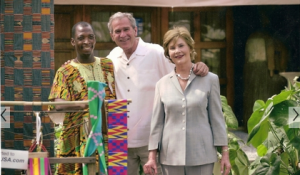Startup CEO: How To Build A Double Sided Marketplace In the Fashion Industry

This post originally appeared on Forbes.com.
Websites like eBay and Amazon have transformed the way people buy and sell products. With a current market cap of $68B and $151B respectively, it’s clear that efficient and highly engaged marketplaces between buyers and sellers can provide real value to both parties.
A new NYC based startup realized the same marketplace dynamic could be applied to a different part of the retail value chain, and in a very specific but necessary category: textiles. Until recently, textile suppliers from around the world had no way to conveniently sell their products in a global marketplace.
I caught up with Benita Singh, the CEO of Source4Style, to learn more about how she is building an online marketplace for a very interesting but critical part of the fashion business.
Dan Reich: There are hundreds of online marketplaces in existence today. Alibaba.com is one example. When did you realize there was a need for a textile marketplace?
Benita Singh: Throughout my career, I spent a lot of time at trade shows, on expensive sourcing trips and even on sites like Alibaba. And it wasn’t unusual for a two-week sourcing trip to India to result in finding only one new supplier. So I learned early on that it was a highly-fragmented market.
At the same time, many of my “best finds” were suppliers that didn’t showcase at the biggest trade shows. And their online presence was limited to a three-page static content site.
We then started to do some research on the market opportunity. In one of our surveys with independent designers, we heard that they spend up to 85% of their time sourcing and navigating the complex textile supply chain. And among the larger fashion brands, we saw that since 2008 travel budgets on the production side of the business were dropping. Couple all these industry trends with the rise of B2B marketplaces and we saw a clear opportunity.
Reich: Any entrepreneur that has built a double-sided marketplace will tell you how hard it is. How are you building both the supply and demand for Source4Style?
Singh: At the beginning, we focused exclusively on building up the supply side of the marketplace. In our case, that was getting a critical mass of textile mills onto the platform. Within three months, we were working with suppliers in over 30 countries. We learned that we must have a baseline of supply before we could go to the demand and start the engine.
We’ve also learned that the two sides of your marketplace may very well have two very different reasons for wanting to be part of your platform. For our buyers, it’s about discovery and access. They want to be able to replicate the inspirational experience of walking a trade show floor 365 days a year, and that’s how we present Source4Style to them.
Our suppliers on the other hand want a more practical tool to help them streamline their leads, follow up with potential buyers and track conversions from sample requests to purchase orders.
It’s critical to learn the value proposition for each side of your market. For our buyers, we have to effectively merchandise and market. For our suppliers, we have to really focus on building a great SaaS platform for them to help manage their global business.
Finally, your influential first adopters can help you grow both sides of the marketplace. Some of our buyers bring their suppliers onto the platform because they want to use Source4Style to manage all of their sourcing. These buyers are also offering case studies that are inspiring others in the industry to give us a try.
Reich: You had to build a global business pretty quickly. What challenges did that entail and how did you overcome them?
Singh: Sourcing is inherently global, so yes, we had to become an international business pretty immediately. Operationally, we built a dynamic platform that allows buyers and sellers to confirm final pricing before proceeding with a purchase order. This accounts for currency fluctuations in the 36 countries where our suppliers are now based. We also brought on local agents in key markets like India and Italy who help us to both onboard new suppliers and ensure that their collections and data are kept up to date.
We have a global market on the buy side as well. And with a small team, we have to provide top-notch service around the globe. This isn’t easy and it means our phones are ringing around the clock. But I consider it the best incentive to grow quickly and intelligently!
Our next steps are to translate Source4Style.com and optimize our platform in key markets as well.
Benita’s work is paying off. In less than two years Source4Style has created a presence in over 76 countries. More recently, they partnered with The Council of Fashion Designers of America to provide their members with “concierge-level access to their comprehensive online sourcing marketplace.”

